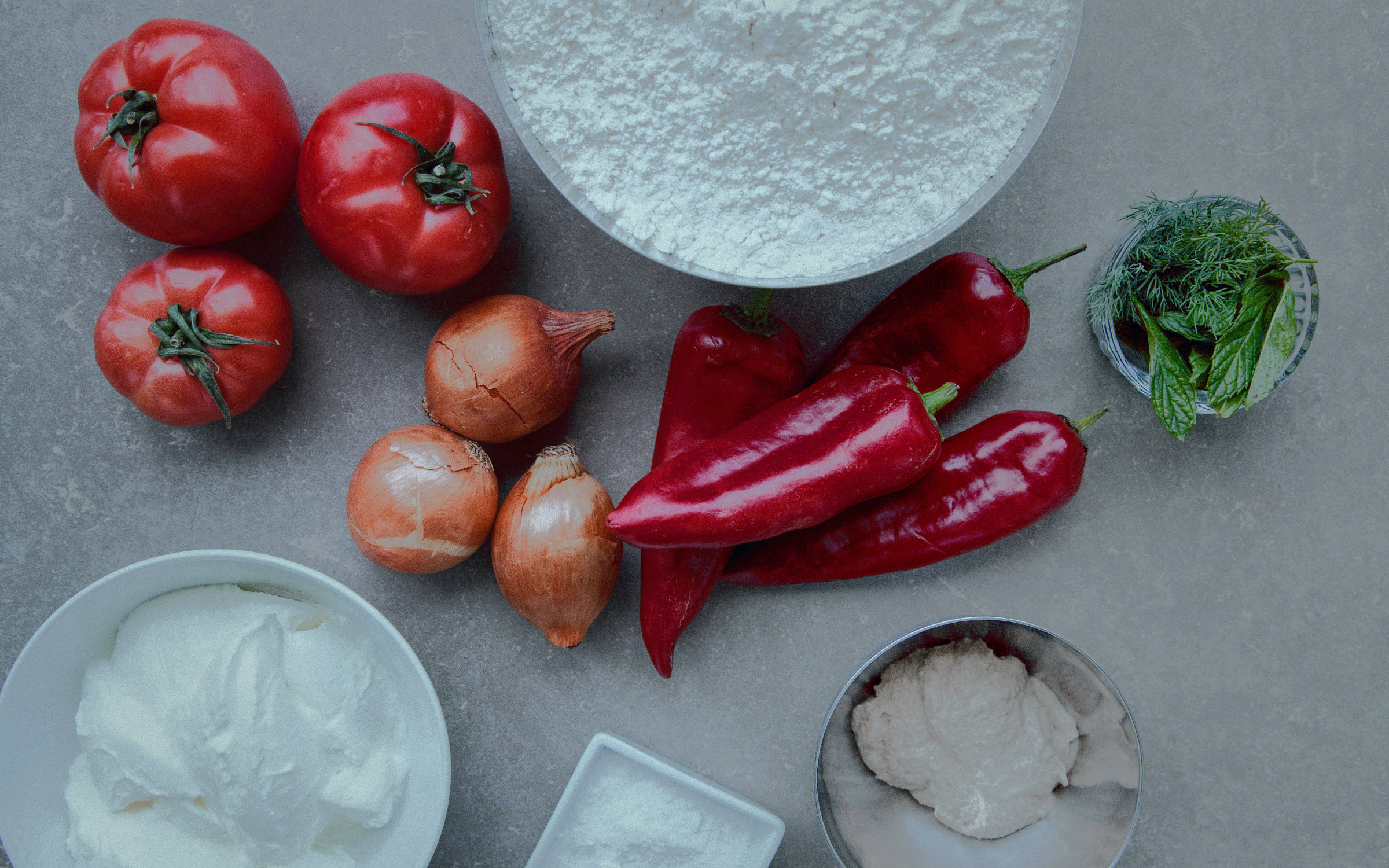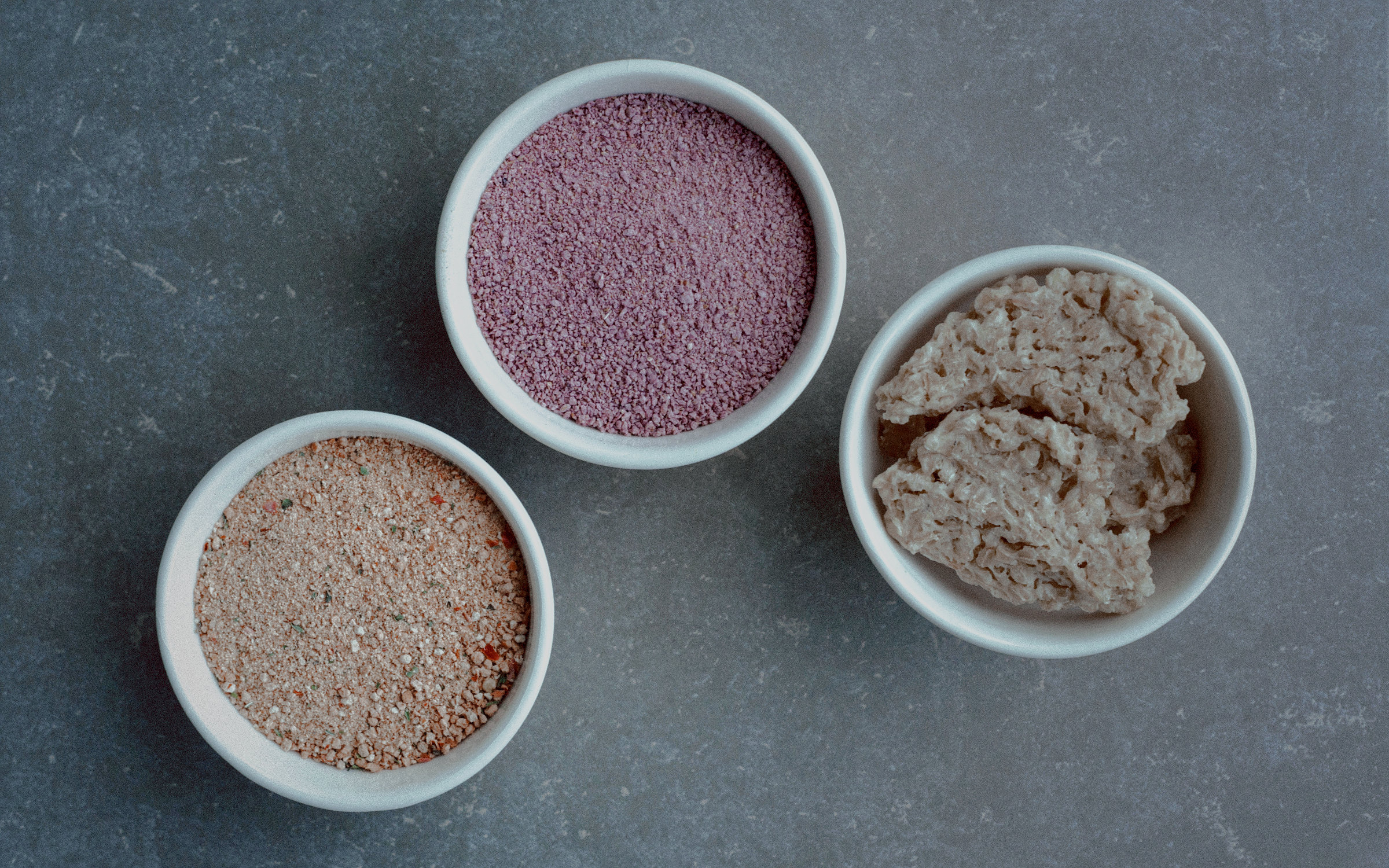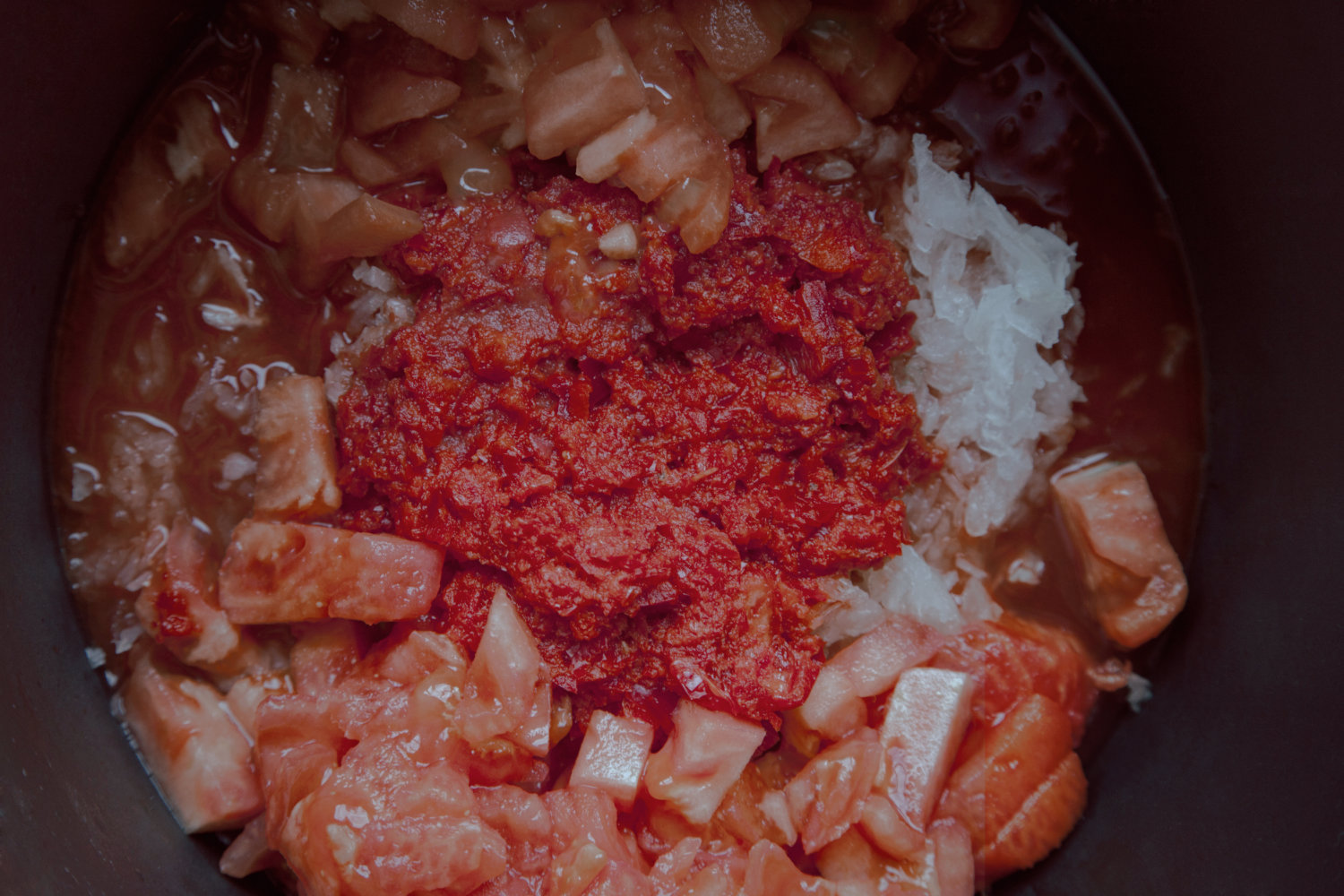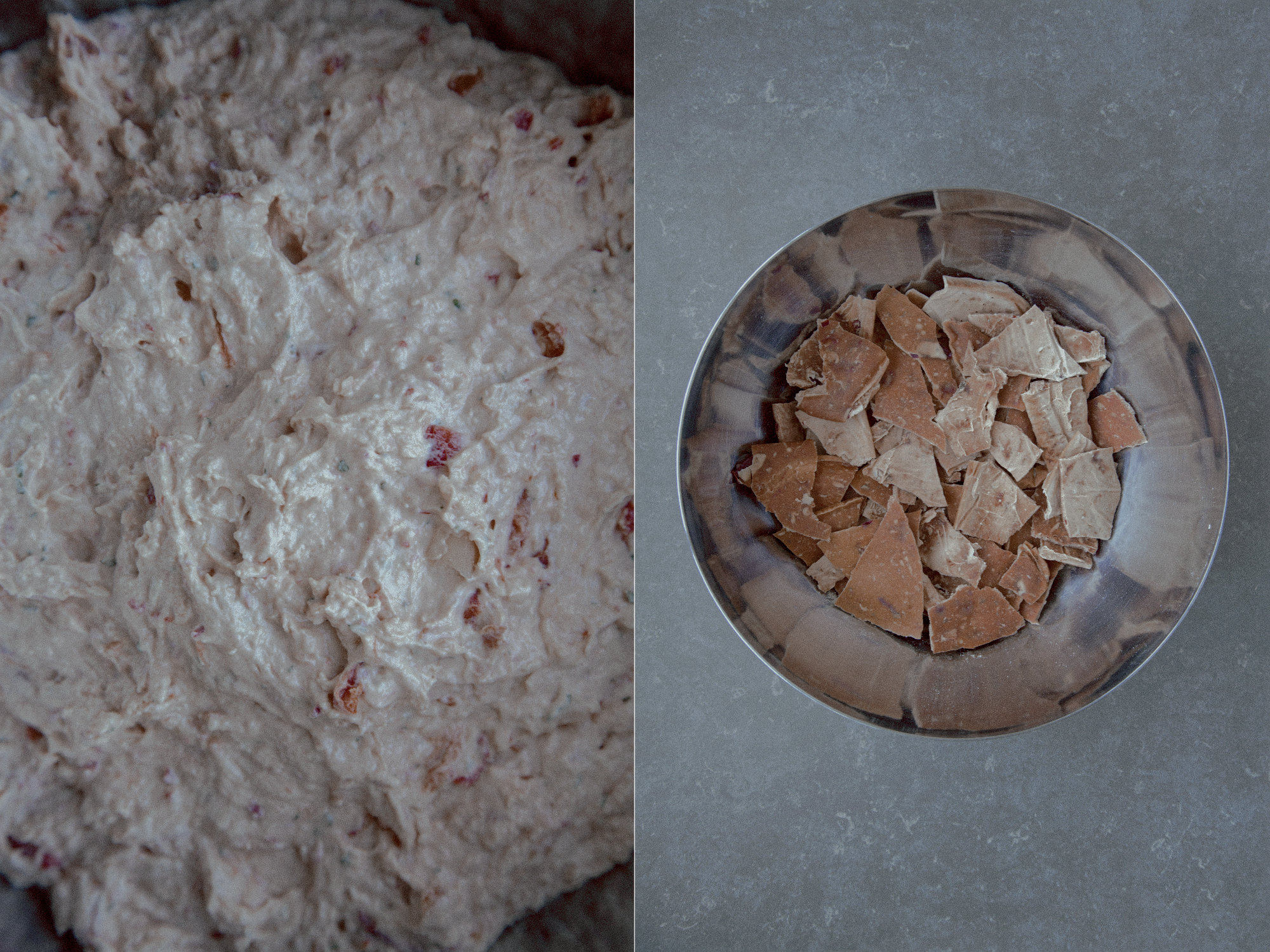The New Gastronome
Tarhana
by Nil Erdoğan
by Nil Erdoğan

When the months of July and August arrive, most of our grandmothers start making tarhana: first, they prepare the ingredients, then they make the tarhana itself, dry and store it for the winter months. Some is usually kept, and some is distributed to family and neighbours. It’s a tradition – a heritage – passed from our elders to us, from the past to the present. One that will, hopefully, spread to the future as well.
According to the Turkish Standards Institute, tarhana is defined as follows: “It is a foodstuff obtained by mixing and kneading wheat flour, cracked wheat, semolina or a mixture of them with yoghurt, pepper, salt, onion, tomato, herbs and that is then fermented, dried, ground and sieved.” Traditionally, it is made in July, August and September and dried naturally. The Tarhana dough is spread on the preferred area or a sheet or cloth for the drying process. It is then turned in regular intervals until dried, which usually takes a couple of days. Finally, it is crumbled, sieved and put into jars.
There isn’t any definite recording of tarhana’s origin. Still, it is believed to have travelled to Anatolia and other countries with Turks, immigrating from Central Asia, though other tarhana-like products can be found elsewhere, too. One research book, which was handled by Bahriye Siyamoğlu under the title of “Research on the Preparation and Composition of Turkish Tarhanas”, was published in 1961 and included information about different preparation styles and the ingredients used for each. According to the book, there are two main types of tarhana making: Göce Tarhanası and Un Tarhanası.
“It is a foodstuff obtained by mixing and kneading wheat flour, cracked wheat, semolina or a mixture of them with yoghurt, pepper, salt, onion, tomato, herbs and that is then fermented, dried, ground and sieved.”
Göce Tarhanası is obtained by cooking groats and milled wheat in a little salted water and mixing it with fat or non-fat yoghurt. Then, it is laid in large pieces on sheets and dried. This form of tarhana is made in the Middle East and Southeast Anatolia, where it is sometimes called top tarhanası. However, it takes quite a long time to cook.

On the other hand, un tarhanası consists of a mixture of tomato, pepper, onion, salt and some herbs, cooked in a bit of water. After it cools, it is mixed with yoghurt and flour and kneaded. It is left to ferment for 1-5 days before being laid on a sheet, dried in the sun and crumbled. Finally, it gets passed through a sieve and thinned according to the individual’s preferences. This tarhana – many places call it Istanbul tarhanası – is easy to cook and doesn’t take too much time.
Turkish Tarhana
In different regions and cities of Turkey, a big range of tarhana is made that varies in ingredients and methods. Cornelian cherry tarhana is one of these varieties. It is prepared from a mixture of flour, salt and cornelian cherries. This tarhana is often found in the provinces of Kastamonu, Kütahya, Bolu, Bursa and Zonguldak. On the other hand, milk tarhana is prepared with a mixture of milk, flour, and eggs. In some places, chickpeas, lentils, and minced meat are added to it as well. Some areas make tarhana by adding broth or must. In some places, sourdough is added. Finally, some regions consume tarhana without drying it by putting it in small bags kept in the fridge or freezer. In that case, it is called yaş tarhana.
A. D V. E. R. T. I. S. I. N. G
Out of all of them, however, only two have earned a geographical indication in Turkey: Kahramanmaraş tarhanası and Uşak tarhanası.
Kahramanmaraş tarhanası was taken under protection in 2010. The preparation of this tarhana starts in July and August when the most suitable wheat is selected and threshed. It is cooked in a bit of water like regular rice and then cooked a second time in its own steam. Afterwards, it is left to cool in a cloth. The cooled wheat is kneaded thoroughly, mixed with fat and slightly sour yoghurt, thyme and black cumin. It is spread thinly on a sheet and removed after 2-3 days of drying. You can find and order this type of tarhana online. You can also find Maraş Style Sıkma Tarhana under the name of Anadolu Lezzetleri, which was created by a grocery company and is made by combining wheat that is beaten in a stone mill, yoghurt and thyme. It then gets soaked in water overnight to form a soup. It is cooked with chickpeas, salt and garlic. Butter, dried mint, and red ground pepper are heated and served on top.
“In different regions and cities of Turkey, a big range of tarhana is made that varies in ingredients and methods.“
Uşak Tarhanası received a geographical indication in 2017. This tarhana is prepared with a mixture of wheat flour, full-fat yoghurt, red peppers, onions, tomatoes and mint. The dough is left to ferment for at least 21 days and is more of a granulose variety laid on a cloth and dried in the shade. The production for this type of tarhana starts in the last week of August and continues until the end of September. During these months, the average temperature in Uşak is 22 C, and the average amount of humidity is 60%, making a longer fermentation at a lower temperature necessary. This longer fermentation and a high ratio of raw vegetables (red pepper, onion and tomato) differentiate the taste. You can buy Uşak Tarhanası from the brand called Tarhana Baba, which was founded in 1974. The founder’s sons continue making tarhana with traditional methods passed down by their father.

While tarhana used to be produced mainly at home, its industrial production has become widespread over the past years. The rapid increase in the urban population and the participation of more family members in the working life has increased the need for ready-to-eat foods, and tarhana has become one of them. Even gluten-free tarhana, special tarhana prepared for babies or tarhana made using different wheat such as einkorn, is now available. At the same time, you can find tarhana on the shelves as a little snack, similar to chips.
“Out of all of them, however, only two have earned a geographical indication in Turkey: Kahramanmaraş tarhanası and Uşak tarhanası.”
Regardless of the method or variety, tarhana always has a sour and acidic taste from the lactic acid bacteria active during the fermentation process. Yoghurt, milk or yeast can be used to start this fermentation process, which makes tarhana easier to digest and gain more nutritional properties. Due to its low glycemic index, the fermentation process also makes the consumption of tarhana safer.
Have you gotten curious? Try making some tarhana yourself. The following recipe produces quite a lot of it, so if you are just trying it for use at home, try reducing the ingredients by half.

Tarhana
Ingredients:
1 kg of flour
250 g yoghurt
50 g sourdough
250 g tomatoes (peeled, chopped)
250 g onion (grated)
250 g red pepper (ground)
5 g herbs (mint, dill chopped)
80 g salt
Preparation:
Put the onion, ground red pepper, chopped tomatoes, salt and a little water on the stove and cook for 15-20 minutes. Add the chopped herbs. When the mixture cools, mix it with the flour, then add the yoghurt and sourdough. Mix it all together. Cover it and leave it to ferment. Mix your dough every day and cover it again. Since I used sourdough, I speeded up the fermentation process. My tarhana was ready in 4 days. You can reach the same result by waiting a couple more days without using any yeast. After the tarhana is ready, we start the drying process. Since I have a drier, I put it on baking paper and threw it into the drier. This process took one day because I had too much tarhana. If you don’t have a drier, you can set your oven to 50 C and dry it using the fan option. Otherwise, you can cut it into pieces and put it on a cloth to dry. After your mixture is dried, it is passed through a food processor and crumbled. You can leave it like that, or you can get a finer structure by sieving it. Getting a fine structure will make it easier when you want to cook with it and prevent clumping. You can put it in an airtight jar and store it at room temperature.
Tarhana Soup (for two people)
Ingredients:
700 g water (cold or room temperature)
50 g ground tarhana
20 g tomato paste
10 g butter
10 g extra virgin olive oil
Preparation:
In a bowl, mix the water and ground tarhana. Put extra virgin olive oil and butter in a pan. When it’s warm, add the tomato paste and cook it for 1-2 minutes. Then add the ground tarhana and water mixture. Bring everything to a boil while stirring. Lower the heat and cook until the consistency starts to thicken. This may take about 8-10 minutes. Add the salt. And it’s ready!
Photos @Nil Erdogan